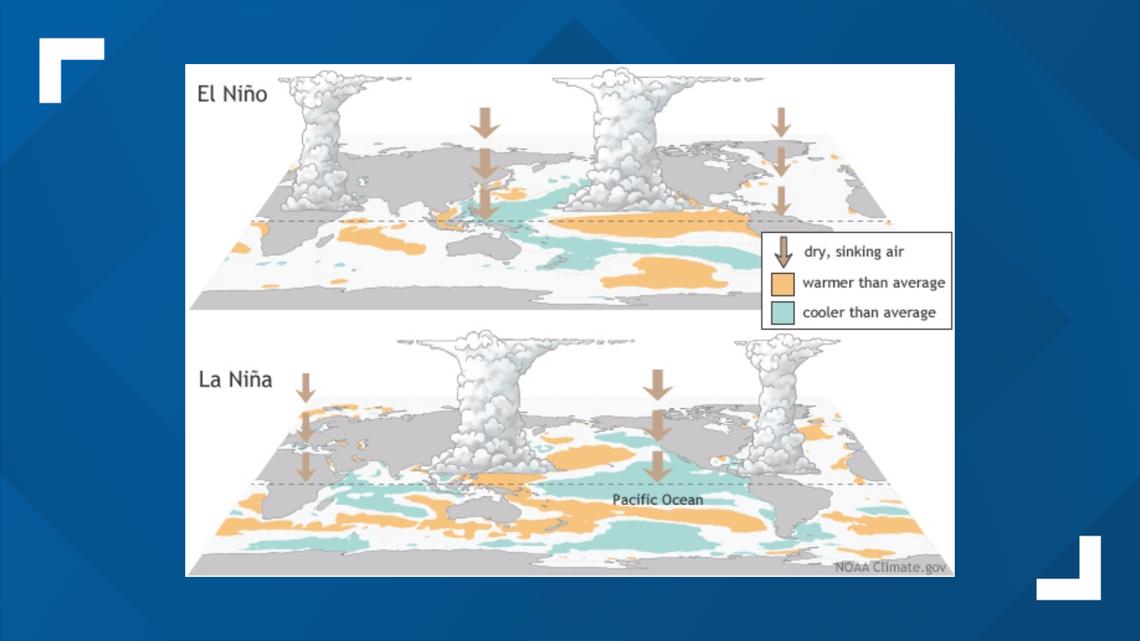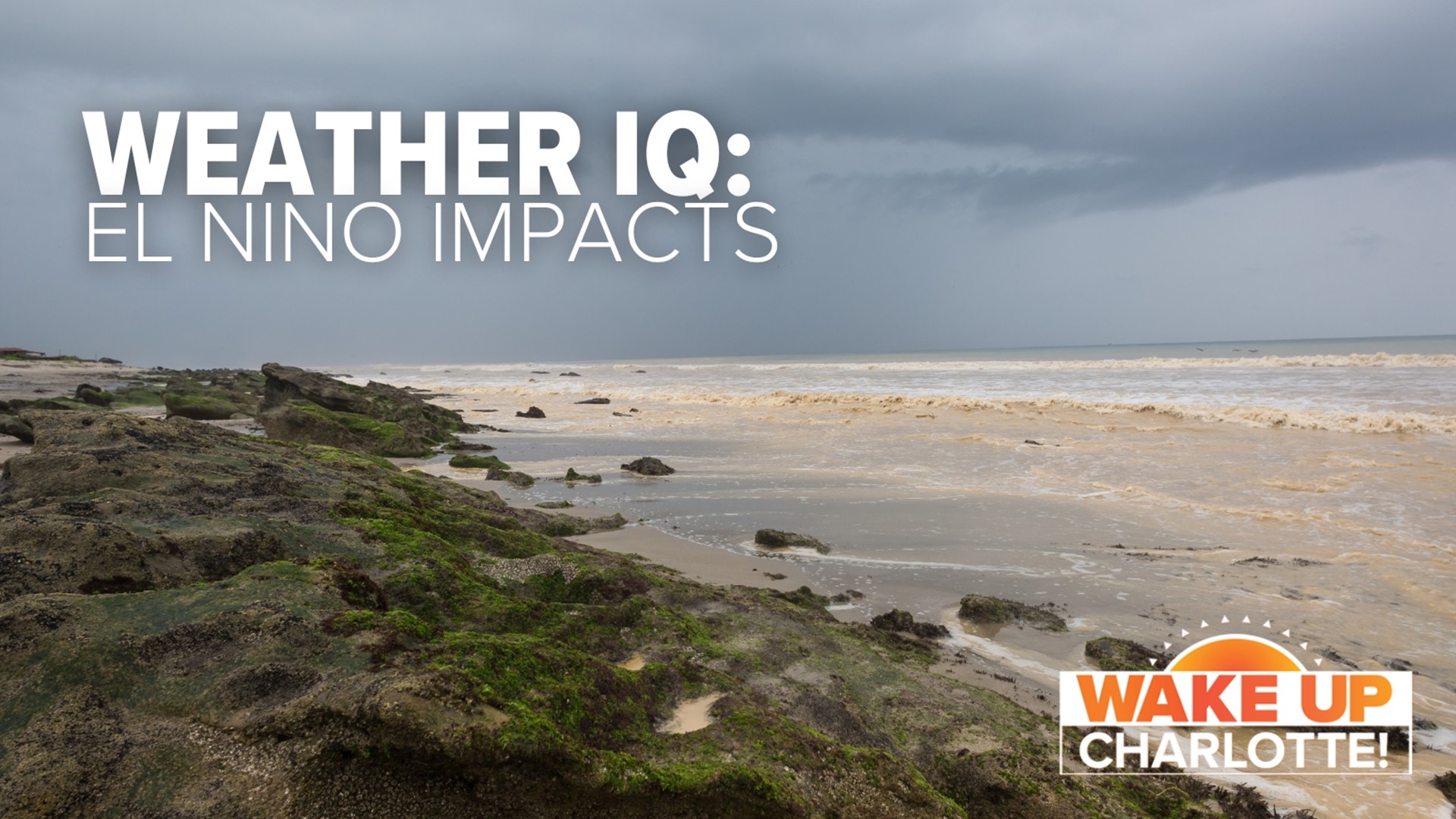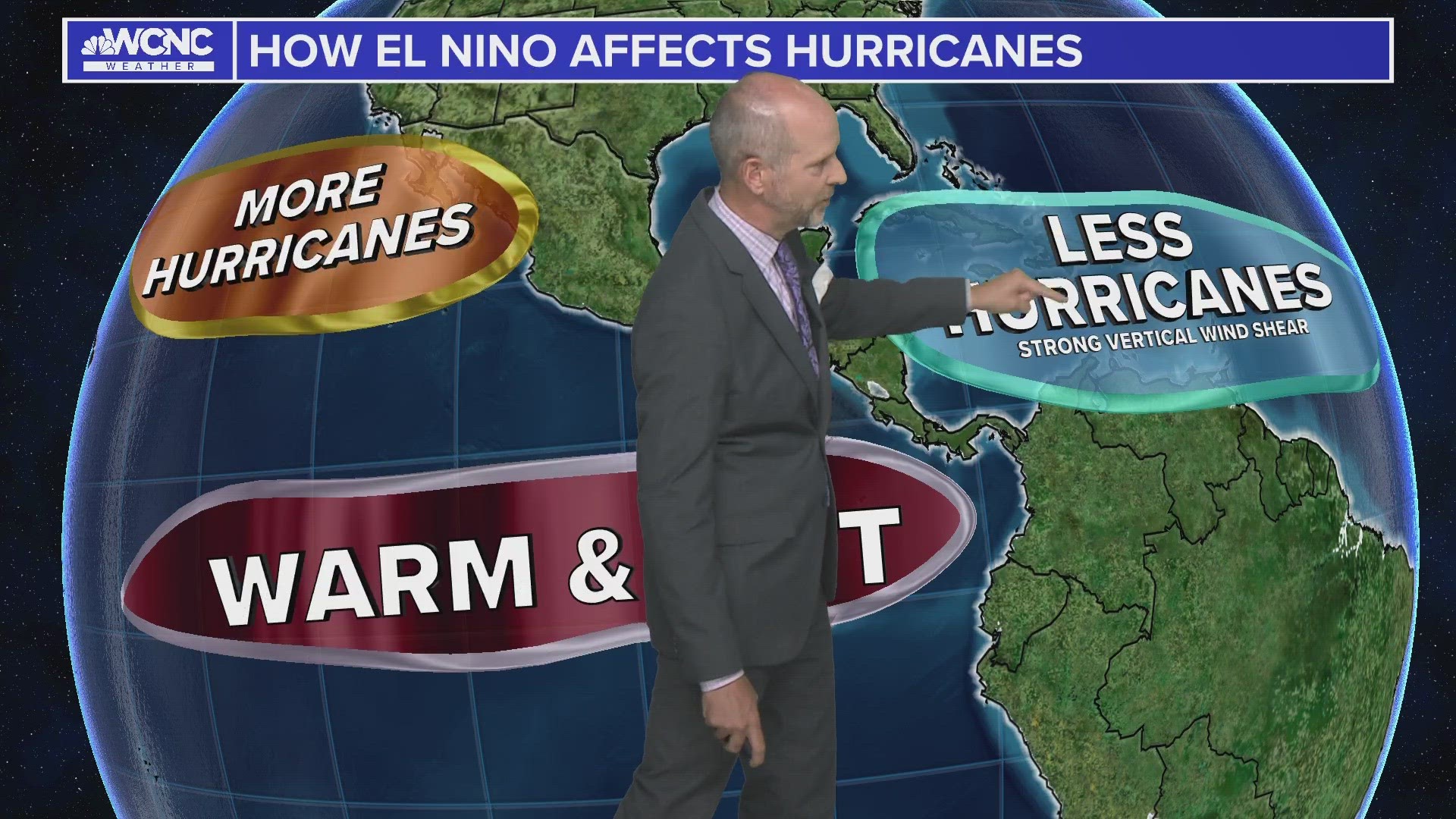CHARLOTTE, N.C. — El Nino is a climate phenomenon that occurs when the surface waters of the tropical Pacific Ocean become warmer than average. This affects the atmospheric circulation and weather patterns around the world.
El Nino usually happens every two-to-seven years and can last for several months or even as long as multiple years.
For the 2023 hurricane season, an El Nino is now in place.
Earlier this year, an El Nino Watch had been issued by NOAA's Climate Prediction Center because of a 62% chance of El Nino developing between May and July period. That meant that conditions were favorable for the onset of El Nino in the next six months.
El Nino can have significant impacts on global and regional climate.
Some of the typical effects of El Nino include warmer and drier conditions in parts of North America, South America, Australia, and Southeast Asia. Vooler and wetter conditions in then present in parts of Africa, Central America, and the Pacific Islands.
El Nino can also influence the frequency and intensity of tropical cyclones (such as tropical storms and hurricanes), droughts, floods, heat waves, and cold snaps.
In the Atlantic Ocean basin, an El Nino typically surpasses hurricane development. El Nino also helps to deter the number of hurricanes due to the increase in wind shear over the Atlantic tropical Basin.
However, no one atmospheric pressure acts alone. Above-average ocean temperatures in the Atlantic Ocean could overcome El Nino's negative effects on storm development.
For the latest weather alerts, download the WCNC Charlotte mobile app and enable push notifications.


For the Carolinas, El Nino usually also means a wetter and more relaxed-than-average winter season.
RAISE YOUR WEATHER IQ: How wind shear can rip apart a hurricane
The opposite is true in the Pacific Ocean basin, where El Nino causes warmer and wetter conditions more prone to hurricane development.
Those scales can flip-flop in other years when the opposite of an El Nino is present: this is called a La Nana. In that scenario, more hurricanes are typically seen in the Atlantic Ocean while lessen are typically seen in the Pacific Ocean.
Contact Brad Panovich at bpanovich@wcnc.com or follow him on Facebook, Twitter and Instagram.
Contact Brittany Van Voorhees at bvanvoorhe@wcnc.com and follow her on Facebook, Twitter and Instagram.
WCNC Charlotte’s Weather IQ YouTube channel gives detailed explainers from the WCNC Charlotte meteorologists to help you learn and understand weather, climate and science. Watch previous stories where you can raise your Weather IQ in the YouTube playlist below and subscribe to get updated when new videos are uploaded.


